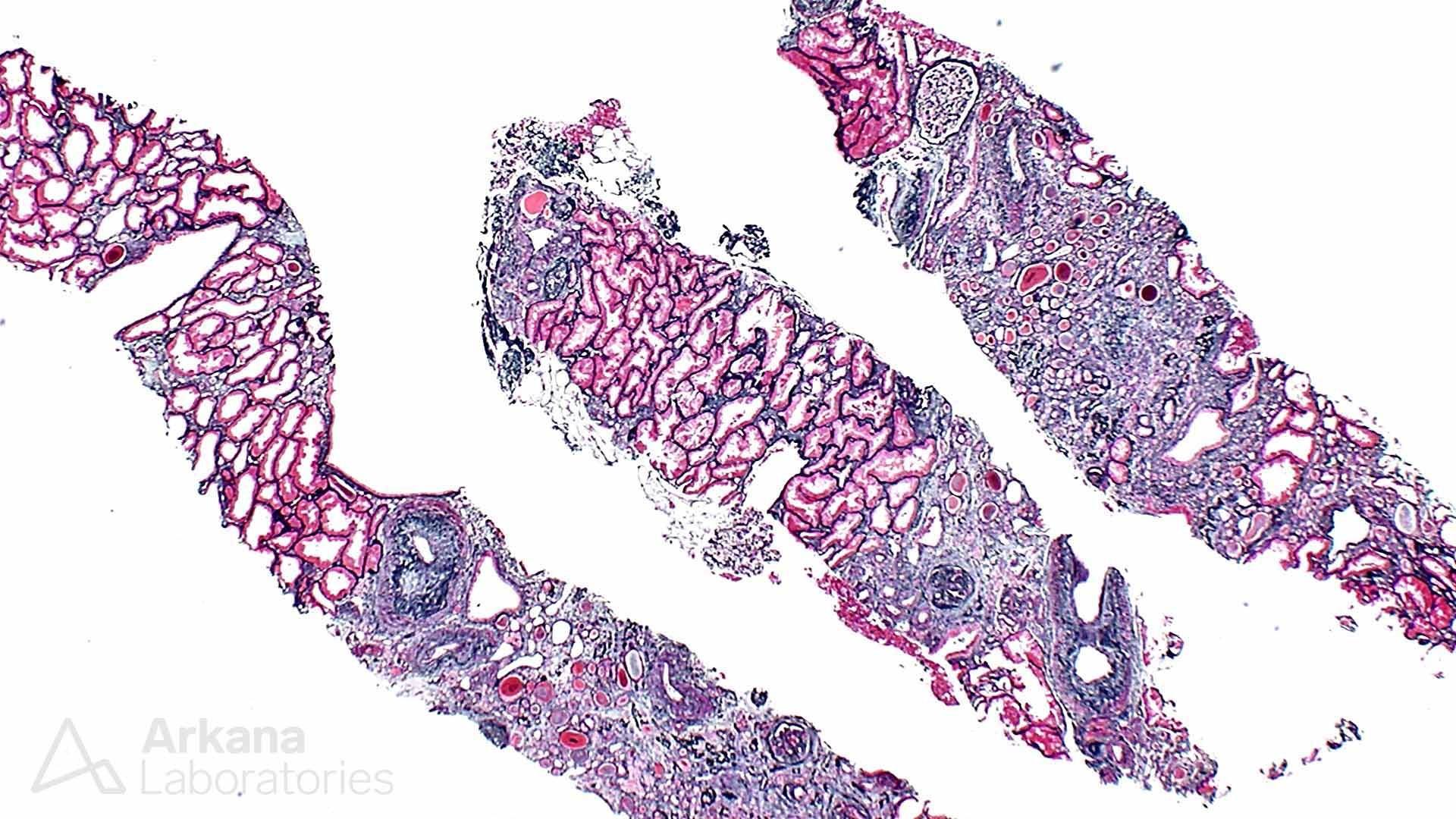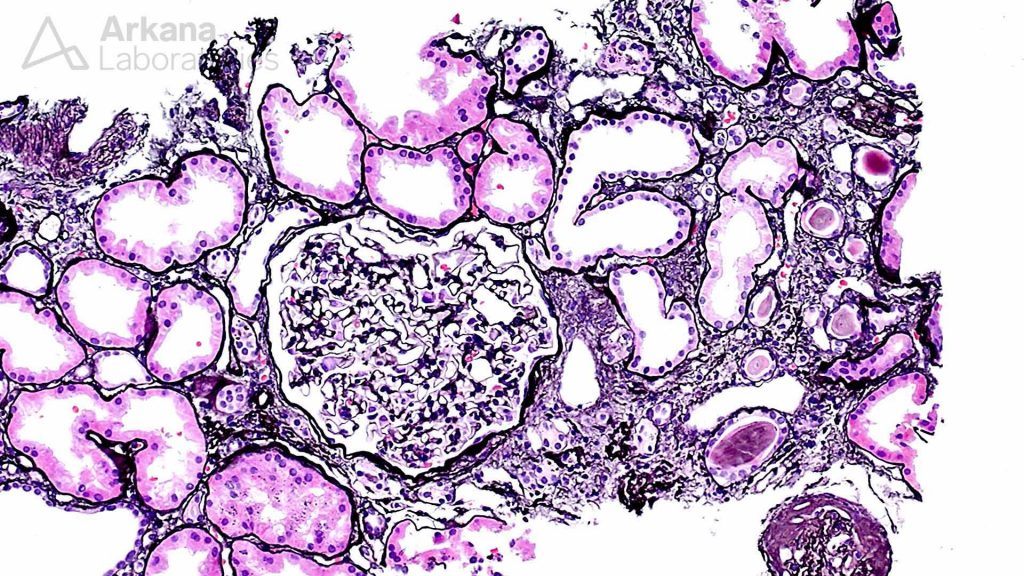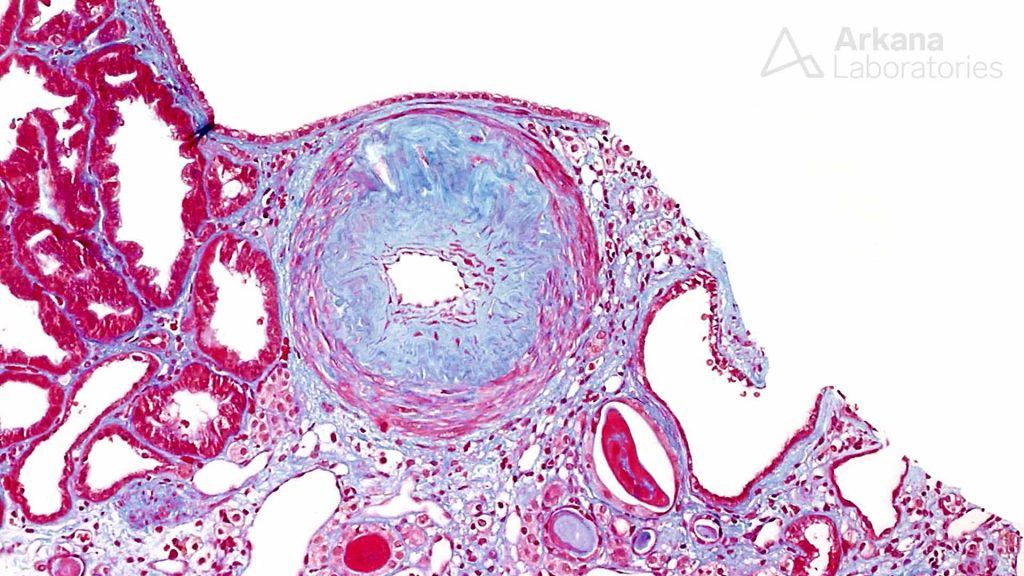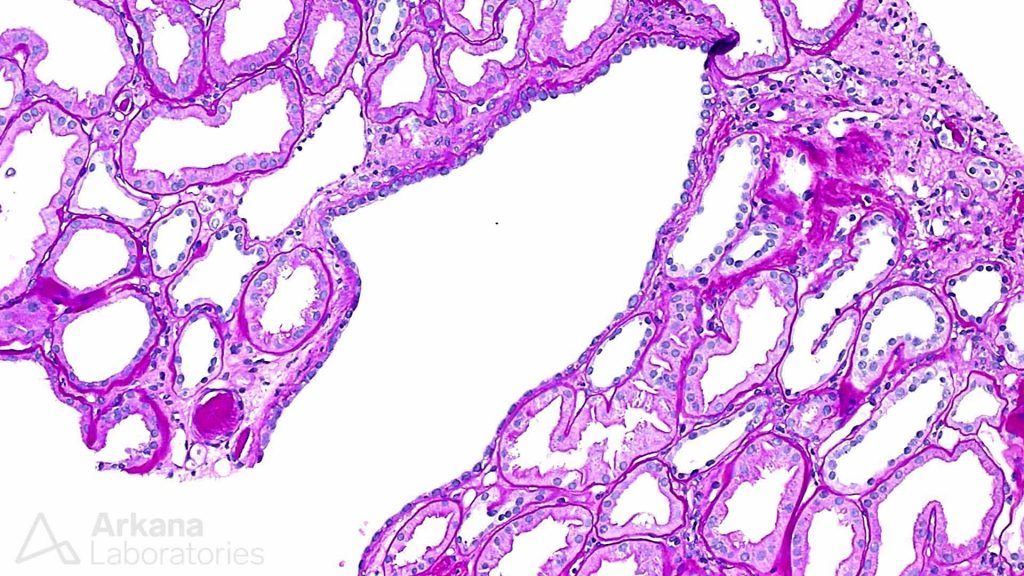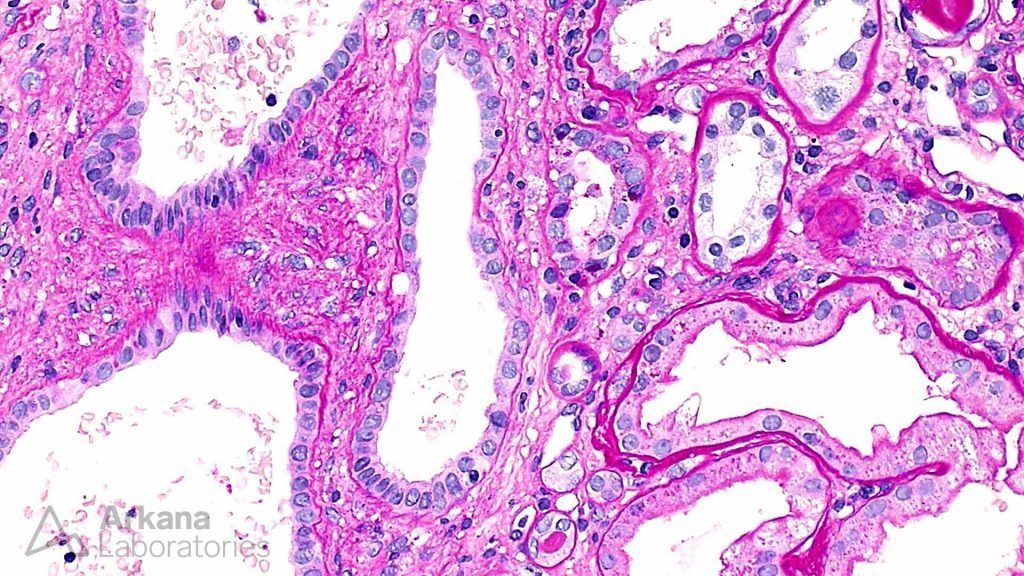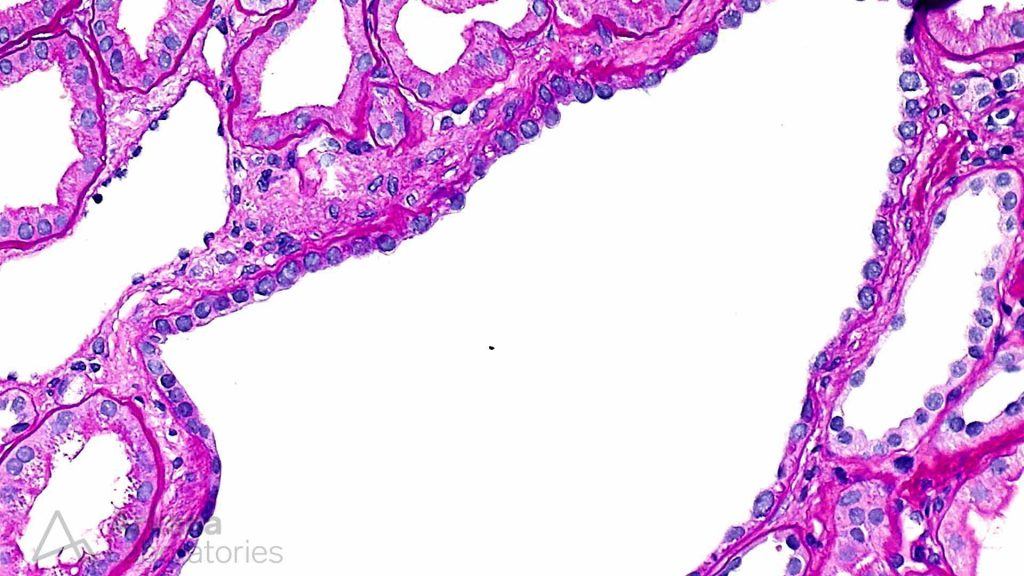These images are from the kidney biopsy of a 45-year-old man with a history of hypertension and bipolar disease presenting with renal failure. Serum creatinine is 3 mg/dl.
Which of these elements has been associated with some of the findings in this biopsy?
A. Potassium
B. Lithium
C. Sodium
D. Antimony
E. Gold
Answer: B. Lithium
The features seen in this biopsy are suggestive of lithium-induced nephropathy. This develops in patients taking lithium-containing medications for prolonged periods, usually 10-20 years, and can manifest decades after the medication has been stopped. It typically shows a chronic tubulointerstitial nephropathy, usually out of proportion to the degree of vascular or glomerular involvement. Ectasia of distal tubules and development of microcysts, although seen in only ~40% of cases, are a pathognomonic feature that helps in distinguishing lithium-induced nephropathy from other causes of chronic tubulointerstitial nephropathy. The microcysts are indeed ectatic collecting ducts that are lined by low columnar to cuboidal epithelium with no significant atypia. Hobnail cells are often noted. The glomeruli are usually spared, although minimal change disease, FSGS, and effacement of podocyte foot processes have also been associated with lithium intake.
The mechanisms by which Li causes tubulointerstitial nephropathy are beginning to be understood. Li is freely filtered at the glomeruli. ~80% Li is reabsorbed by the proximal tubular epithelia via the Na-H exchanger (NHE). In the distal tubules and collecting ducts, Li enters the cells via the apical membrane epithelial sodium channel (ENaC) which has a higher affinity to Li compared to Na. However, the affinity of the Na-K-ATPase at the basolateral membrane for Li is much less than for Na, leading to intracellular accumulation of Li in the principal cells of the collecting ducts. The increased concentration of Li in the principal cells appears to interfere with various downstream signaling pathways that may account for the toxicity with chronic Li exposure. Notable among these pathways are impaired phosphorylation of protein kinase A and decreased transcription of the gene for aquaporin 2 (AQP2), both of which lead to decreased AQP on the apical membrane, decreased water reabsorption and diabetes insipidus. Interactions of Li with other proteins, notably glycogen synthase kinase (GSK3) and VHL are thought to be involved in the pathogenesis of fibrosis and microcyst formation.
Quick note: This post is to be used for informational purposes only and does not constitute medical or health advice. Each person should consult their own doctor with respect to matters referenced. Arkana Laboratories assumes no liability for actions taken in reliance upon the information contained herein.
